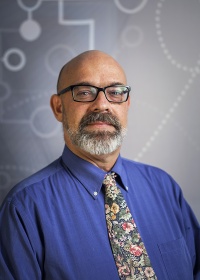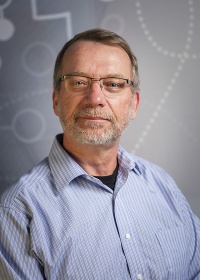La JOLLA, Calif. (Tuesday, Feb. 23, 2016) – All Internet service providers worry about security, load and speed. A specialized set of public-serving networks does this while supporting breakthrough research and transporting some of the biggest data sets known to mankind. These networks make up The Quilt, a coalition with the mission to advance research and education through network services and applications.

Leaders of the Ohio Academic Resources network (OARnet) and the Ohio Technology Consortium attended the winter member meeting of The Quilt from Feb. 8-12 in La Jolla, California. The member-led national coalition of 36 U.S. non-profit regional networks meets twice annually to collaborate on best practices and share ideas.
“The reason we get together as The Quilt is to discuss the things we have in common that aren’t in common with the rest of the world,” said Mark Beadles, OARnet information security officer.
A main initiative of The Quilt is to provide advanced network services at a low cost, which it can do through aggregate buying power of its members. The winter meeting included discussions of the ninth request for proposal efforts for the Commodity Internet Services (CIS) program, which is issued every other year. By bringing collective buying power to the table, member networks receive better rates on Internet services from CIS vendors than they would have received individually.

“An unintended consequence, but a very fortuitous one, is we have reshaped the marketplace for Internet services to the regional networks in the U.S.,” said Paul Schopis, interim director of OARnet and executive committee member of The Quilt. “Most major carriers compete for our business.”
An issue many networks, including OARnet, are facing is the expiration of fiber indefeasible rights of use (IRUs), many of which are set to expire in five years. An agreement with Level 3 Communications – which owns much of the fiber – that would enact a blanket program to extend the current IRUs by 10 years, is now in the works after discussions at the meeting.
Security was also a prominent topic at the meeting. Beadles attended a CENIC-hosted tour of Calit2 for Quilt members where tour participants learned about some of the complex research data being communicated over the CalREN as well as other R&E networks. This included DNA sequencing, drone remote control and video and radar images that are being used to assess ancient ruins and earthquake wreckage. Beadles explained that network security is especially important for regional networks that support scientific research.
“If someone disrupts one of our networks, that could halt a scientific collaboration in progress,” Beadles said. “We discuss how we can collaboratively protect the networks from attacks while still doing things at high speed.”
Because members of The Quilt are not competitors, a culture of idea- and service-sharing is encouraged. Schopis participated on a panel that discussed using E-Rate funds—government funding to help schools and libraries obtain affordable broadband—to procure dark fiber, a new service category. This would allow greater connectivity for K-12 education that it may not be able to obtain in the regular broadband marketplace.
The next meeting of The Quilt will take place Oct. 19-21, in Philadelphia, Pennsylvania.
###
The Ohio Academic Resources Network (OARnet), a member of the Ohio Department of Higher Education’s Ohio Technology Consortium, provides technology solutions for Ohio's education, public broadcasting, health care and government communities. Since 1987, OARnet has identified and deployed shared services that reduce costs, deliver quality programs, increase productivity and improve customer service. Communities voluntarily participate in the OARnet consortium because they value these benefits and services. Ultimately, OARnet promotes community and economic development by expanding access to affordable technology. For more: www.oar.net. Follow OARnet on LinkedIn, Facebook and Twitter.